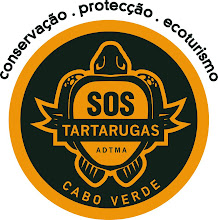During the season, the days vary so much, from full on, massive adrenalin patrols to peaceful, strolls on the beach and everything in between. Here are a few examples of how our nights can be....
6/08/10, Costa Fragata 9pm-1am, Stef and Santi
The only thing on patrol tonight was an FCUing turtle spotted on Kite Beach, a few hundred metres after the shack. She wasn’t tagged. The rest of the patrol was non eventful, soldiers and poachers were totally absent.
08/07/10 Algodoeiro 3am-6am, Hattie and Sandra
I’d like to say that Sandra and I had a nice patrol full of turtles. Sadly this is not the case. At 3.35am we found something we didn’t want to find, a dead mama turtle. Her carapace, flippers, eggs and everything else the hunters decided they didn’t want were discarded around her, it really wasn’t a pleasant sight. We phoned the police but sadly they were unable to attend. We took some photos, and recorded the data measuring her carapace and took a GPS the location. Following this we carried on patrolling the beach recording another 5 activities and trans-locating one nest of 84 eggs into spot ten in the main hatchery.
10/07/10 Costa Fragata 9-1am, Stef, Janice and Fab
OMG call it an eventful night! So everything seemed quiet along the beach, strolled half way down Quarry and stop to check out a track that looked pretty fresh… I crawled up to the first pit noticing there didn’t seem to be a down track however the up track ended just after the dune, so I called Janice and Fab, with our detective hats on we started investigating…. TCSI (turtle crime scene investigation). After a while I decided to follow what seemed to be in the pitch darkness a drag mark. We walked down right into the back of the dunes when Fab noticed something moving, turned out to be the poor mama upside down! We were worried it may have been harmed but after turning our lights on we worked out she was still alive and completely fine. We phoned the emergency phone and waited for Neal to come and help, guarding the mama turtle. When Neal arrived she was tagged measured and flipped the right way and returned safely back to sea. The turtle named Lucky Kite had been successfully saved! We continued patrolling and later we saw two men where lucky Kite had been, we assumed they had come back for her, IN YOUR FACE POACHERS! Later that night on PJ we saw a mama turtle nesting. We are all very tired now and its time for the boys to take over, good night Lucky Kite it was nice to meet you!
27/07/10 Costa Fragata 9-1 Janice, James and Steve
We saw no turtles and no new tracks only tracks recorded by the tour earlier. We did see 6 men and a dog walking up the beach and behind the dunes where they sat down. As we left the beach 3 men and a dog left too. We informed the second patrol so they were able to keep and eye out. Yawn.






















































